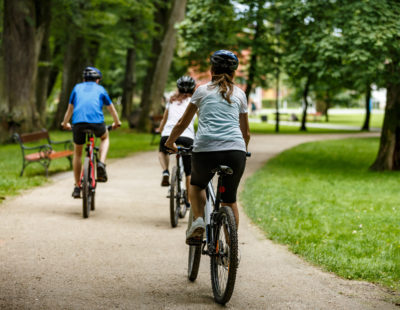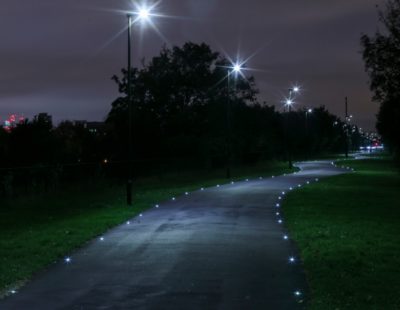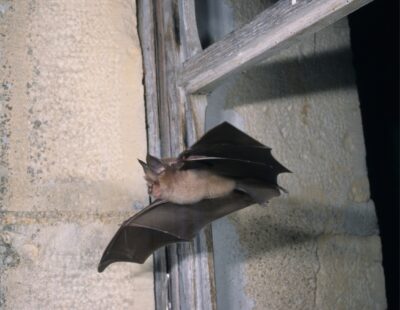Cycle paths are becoming increasingly popular in both rural and urban areas. And with considerable cycle traffic, the safety requirements for cycle paths are becoming even more important. One element to consider for both pedestrians and cyclists is lighting, providing clear illumination that ensures a safe environment for those using it.
Here at Solareye we want to help, which is why we have comprised this article explaining the various options and benefits of each type of lighting for cycle routes.
Ensuring safety for cycle paths
Cyclists must be able to clearly see uneven surfaces and obstacles, and – at the very least – the edges of the path. The lighting should be positioned so that it can guide cyclists, allowing them to easily follow the markings.
When it comes to providing the right light in the right place at the right time, solar lighting can ensure that people benefit from the best conditions in each environment. This is particularly true for bicycle paths where our solar powered lighting units are often used both in-ground and as bollards, safely guiding the way for cyclists.
Facilitating safety for pedestrians and cyclists >
Optimising the resources for cycle path lighting
Lighting public areas can account for a large part of a council’s energy bill, yet with the right technology and the right provider, it can be considerably reduced. The relevance of an investment has to be measured over time, considering the savings it provides in terms of energy and maintenance costs over the years.
When choosing Solar Lighting for cycle paths, there are a lot of options available, and they all have their respective benefits. More affordable options like ground lighting are a great solution for cycle paths without a huge budget or that are located in conservation areas. For a more premium aesthetic, solar bollard lights can be used to fully illuminate the cycle path and give better visibility.
Read our guide on the best options for public outdoor lighting for top tips.
Preserving wildlife and the environment
Aside from cyclists, there are others to consider when it comes to lighting cycle paths; bats and other nocturnal animals may also use the area. Trees and hedgerows are natural environments for bats while rivers and canals are also important for foraging.
Installing inappropriate lighting can impact feeding areas and prevent bats from moving through the landscape. However, bats are not the only animals that need to be protected from light spill and uncontrolled lighting.
Plants and animals depend on the Earth’s daily cycle of light and dark rhythm to govern life-sustaining behaviours such as reproduction, nourishment, sleep and protection from predators. Scientific evidence suggests that artificial light at night has negative and deadly effects on many creatures including amphibians, birds, mammals, insects and plants.
So aside from human users, animals should also be considered to minimise these negative impacts.
Learn more about making outdoor lighting bat friendly >
Pathway lighting ideas
Solar ground lights
Ground lights are stylish, minimalistic and effective at waymarking the direction of a path. Simple and unobstructive to install, solar ground lights can be quickly placed into shallow holes in the ground creating a skid resistant, near flush to the ground appearance. The cost effective, self-sustaining nature, and simple installation make solar ground lights a big hit with councils and local authorities looking to install a large amount of lighting without disrupting infrastructure and substantial expenditure.
Our pioneering Solareye80 solar powered ground lighting units are small but effective outdoor lights powered by renewable solar energy. With IP68 certification ensuring resistance to dirt and water ingress, a battery life of over 8 years, and a skid-resistant finish, Solareye80s are the go-to maintenance-free ground lighting solution. There are endless benefits to outdoor solar lighting, all perfectly suited to pathway lighting.
See our solar powered ground lighting in action and read reviews from customers by viewing our library of case studies.
Floodlights
Floodlights or streetlights are some the most effective illuminators in terms of quantity and brightness of light emitted. The installation of floodlights/streetlights is more disruptive and mains connections are required to power the lighting, making them the most expensive outdoor light solution.
There are also ecological considerations to be made when it comes to this type of lighting as more light means more light pollution, which, as discussed above, has negative impacts on wildlife. One potential solution is to turn off floodlights during certain times or in certain locations in order to minimise the impact of artificial lighting at night on nocturnal animals.
If this approach is adopted, you may wish to consider installing a more ecologically friendly solution such as solar ground lights to provide gentle wayfinding light so that any cyclists/pedestrians using the path once the floodlights are turned off, can safely find their way. A great example of this is the Newham Greenway in London (shown below).

Bollard lighting
Bollards provide an ideal middle ground between taller streetlights and ground lights. Depending on the energy source for the light units within the bollard (solar vs mains power), the installation demands, and maintenance needs vary. The above-ground nature of bollards makes them an ideal option for establishing boundaries, such as in city centres whereby areas may be reserved for pedestrians only and entry prevented for vehicles.
Eco-friendly pathway lighting
There are various ways to ensure pathway lighting solutions are environmentally friendly – read our guide to eco-friendly lighting to find out more.
To combat the negative consequences of artificial lights, outdoor lighting can be altered to reduce light spill. Our innovative Bat Hat product, for example, reduces the upwards light spillage of our solar powered light by around 98%, offering the same great illumination without disrupting bats as they fly above. Find out more about our Bat Hat!
See more: Light pollution – what is it and how can we reduce it?
The power source of pathway lighting should also be considered; energy from renewable sources is deemed eco-friendly. Solar powered lighting is an eco-friendly solution that preserves limited fossil fuels and offsets the negative emissions. In addition to the environmental benefits, solar powered outdoor lights are self-sustaining and do not need connections so can be quickly installed then left for years with virtually no ongoing maintenance required.
Sustainable cycle path lighting with Solareye
With over 30 years in the traffic/cycle and pedestrian safety industries, Solareye provides safe and sustainable products alongside exceptional customer service.
Get in touch with one of our team today to get the ball rolling towards a safe, environmentally friendly and aesthetically pleasing cycle route in your area.
Alternatively, take a look at our LinkedIn or Instagram accounts to see recent projects we’ve been working on.
Next read: Solar Ground Lighting Buyer Guide – Everything You Need to Know. >





